This post may contain affiliate links, which means I may receive a commission from purchases made through the links.
What are Tubers?
Tubers are a type of vegetable that grows underground. They are essentially the swollen parts of a plant’s root or stem. Tubers are a good source of carbohydrates, vitamins, and minerals and can be prepared in various ways such as boiling, roasting, or baking. In this article, I review the commonly eaten tubers across the world. I also dive deeper into the tubers that are commonly eaten in East Africa and highlight some differences that exist between them and tubers from other regions. I will also outline the health benefits of eating tubers and share recipe ideas for some.
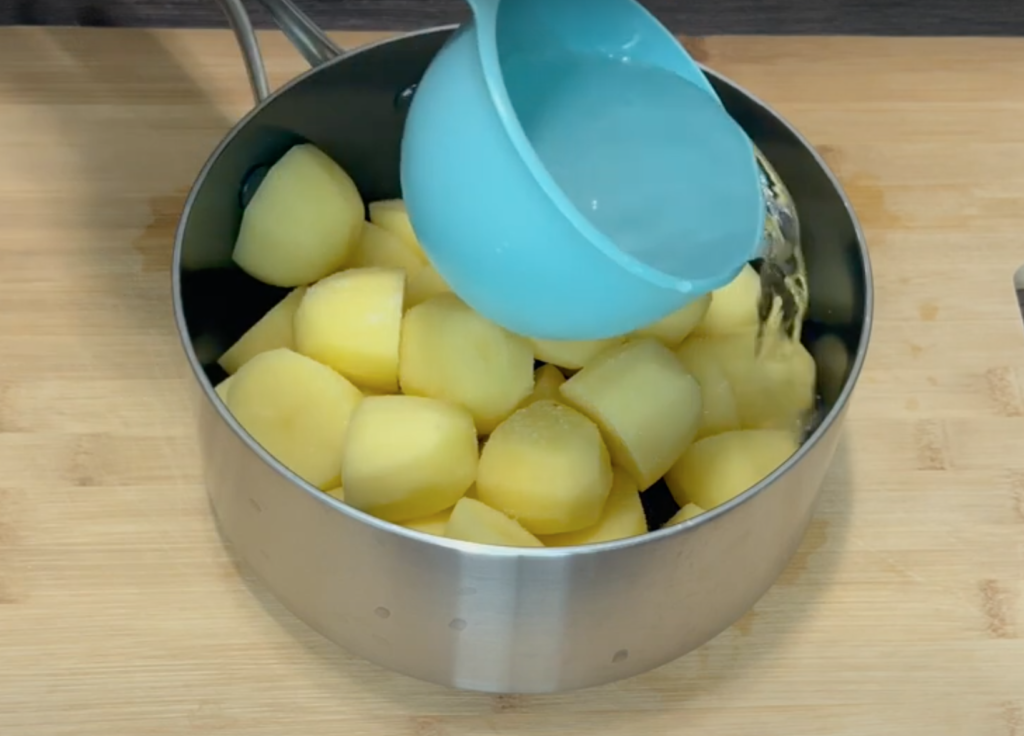
Commonly Eaten Tubers Across the World
Potatoes: One of the most commonly eaten tubers across the world, potatoes are a staple in many cuisines. Potatoes are very versatile and can be fried, baked, boiled, mashed, or roasted. French fries are probably the commonest way in which potatoes are consumed but in countries like the United States, mashed potatoes and potato salads are also common.
Sweet Potatoes: Sweet potatoes have a sweeter flavor compared to regular potatoes. They are also part of the most commonly eaten tubers the world over. There are many varieties of sweet potatoes and their colors, levels of sweetness, as well as textures vary widely. Sweet potatoes can be baked, roasted, mashed, or even fried. They are also popular in pies and desserts. In the United States, sweet potato pies are popular, especially during the Thanksgiving holiday.
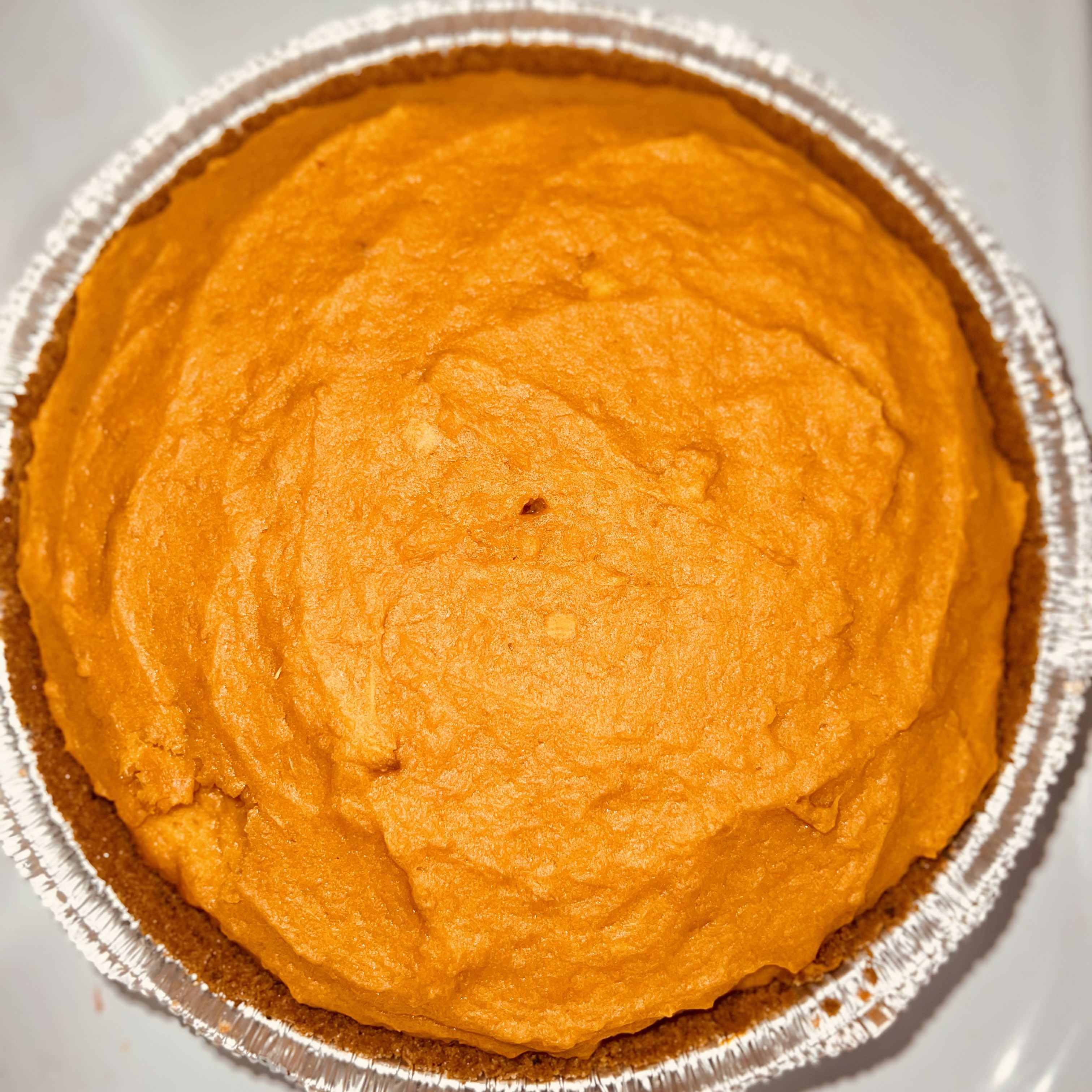
Yams: Yams may easily be confused with sweet potatoes, as some cultures refer to sweet potatoes as ‘sweet yams.’ However, yams are starchier and less sweet. They are commonly used in African, Caribbean, and Asian cuisines. Yams can be boiled, mashed, fried, or used in stews and soups. Yams are a staple in many West African countries like Nigeria. A starchy dish called ‘pounded yam’ is highly consumed accompanied by stews and soups.
Beets: Also referred to as ‘beetroot’, beets have a slightly sweet flavor and are known for their deep red color. Beets can be roasted, boiled, pickled, or eaten raw. They are often used in fruit salads and as a natural food coloring.
Turnips: Turnips are slightly larger than radishes and have a slightly sweet taste. They can be roasted, boiled, or mashed. Turnips may be used in stews and soups or cooked separately as a side dish.
Radishes: Radishes have a crisp texture and somewhat peppery flavor. They share many characteristics with turnips, but they are smaller, round, and with bright red skin and white flesh. Radishes may also have pinkish or even black skin. They’re often used as a crunchy, flavorful addition to dishes such as Tacos, sandwiches, salads, and much more.
Rutabagas: These are similar to turnips, but they are sweeter and larger. Rutabagas may be roasted and served as a side dish, or they may be incorporated in stews, casseroles, and so on.
Jerusalem Artichokes (Sunchokes): These look very similar to ginger externally. However, they have a different texture, flavor, and thus, usage. Sunchokes have a nutty, slightly sweet flavor. They can be roasted, sautéed, or used in soups.
Oca: Oca is a tuber that originates from South America. It has a tangy, lemony flavor. Oca comes in various colors, including yellow, red, and purple. It is typically eaten cooked, and its texture becomes somewhat similar to potatoes when prepared. It can be roasted, boiled, or used in soups, stews, and salads.
Tubers that are Commonly Eaten in East Africa
In Kenya, Uganda, and Tanzania, a variety of tubers and root vegetables are staples in the diet and are commonly grown. As one would expect, some of the commonly eaten tubers across the world are also popular in East Africa, but variations do exist in some instances. Some of the most common ones include the following.
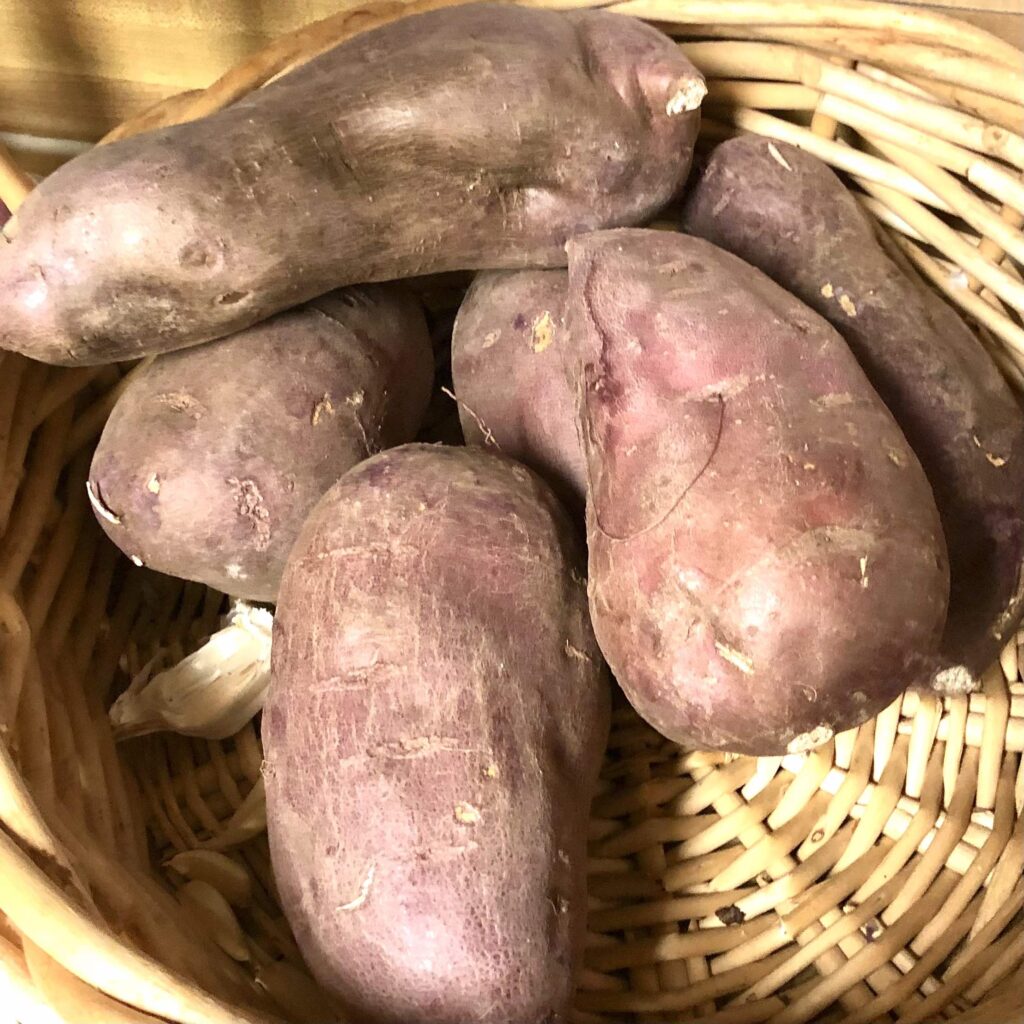
Sweet Potatoes: The varieties of sweet potatoes that are common in East Africa are often white, cream, or purple in color. They are very similar to the Japanese sweet yam. This contrasts with the deep yellow/orange sweet potatoes that are common in the United States. Sweet potatoes in East Africa are widely enjoyed and used in a variety of dishes. As I mentioned earlier, they can be boiled, baked, or roasted. They’re often used as a side dish, but they are also eaten as a breakfast item or a daytime snack. In Uganda, roasted sweet potatoes are a common street food.
Cassava: Known in Swahili as muhogo, cassava is a starchy root with tough, brown skin and white flesh. It has a slightly nutty flavor and a dense texture. Muhogo is similar to the Yucca root that is commonly used in South American dishes. It is a versatile tuber used in many traditional dishes in East Africa. Besides its commonest usage to make ugali flour, it is often boiled, fried, or roasted and eaten in the same way as sweet potatoes – as a side dish, a snack, or a breakfast item.

Yams: Not to be confused with sweet potatoes, taro, or arrowroots, yams are another popular tuber in East Africa. They are starchy tubers with rough, scaly skin that varies in color from brown to reddish. The flesh inside can be white, purple, or yellow. Yams are typically boiled, roasted, or fried. They are used in traditional dishes and are valued for their hearty texture and flavor. They’re sometimes incorporated into meat stews or separately served alongside meats.
Irish Potatoes: Also known as (regular) potatoes, they are widely consumed and used in a range of recipes in East Africa. Irish potatoes are the most common variety of potatoes in the region. They have smooth, brown skin and white flesh. They have a mild flavor and are very versatile. They can be prepared in numerous ways, including boiling, baking, mashing, and frying. Potato fries, referred to as ‘chips’ in East Africa, are a staple and probably the most popular street as well as fast food. In Kenya, these potatoes also form part of traditional cuisine for some communities like the Kikuyu, whose Mukimu (mokimo) dish is made from boiled and mashed potatoes into which vegetables like corn and pumpkin leaves are added.
Taro/Arrowroots: These two names may sometimes describe two different tubers, but locally known as nduma, taro is a tuber with brown, hairy skin and starchy, white, or purple flesh. It has a slightly nutty and non-sweet flavor and a smooth texture once cooked.
Taro is used in similar ways to potatoes and is a traditional food in many parts of East Africa. Taro is typically boiled or steamed but some may roast it. In Kenya, it’s often also incorporated into meat stews.
Each of these tubers is integral to East African cuisine and together, they provide essential nutrients and energy to the people. They are often prepared in both modern and traditional ways, reflecting the rich culinary heritage of East Africa as well as adaptations that have happened over time.
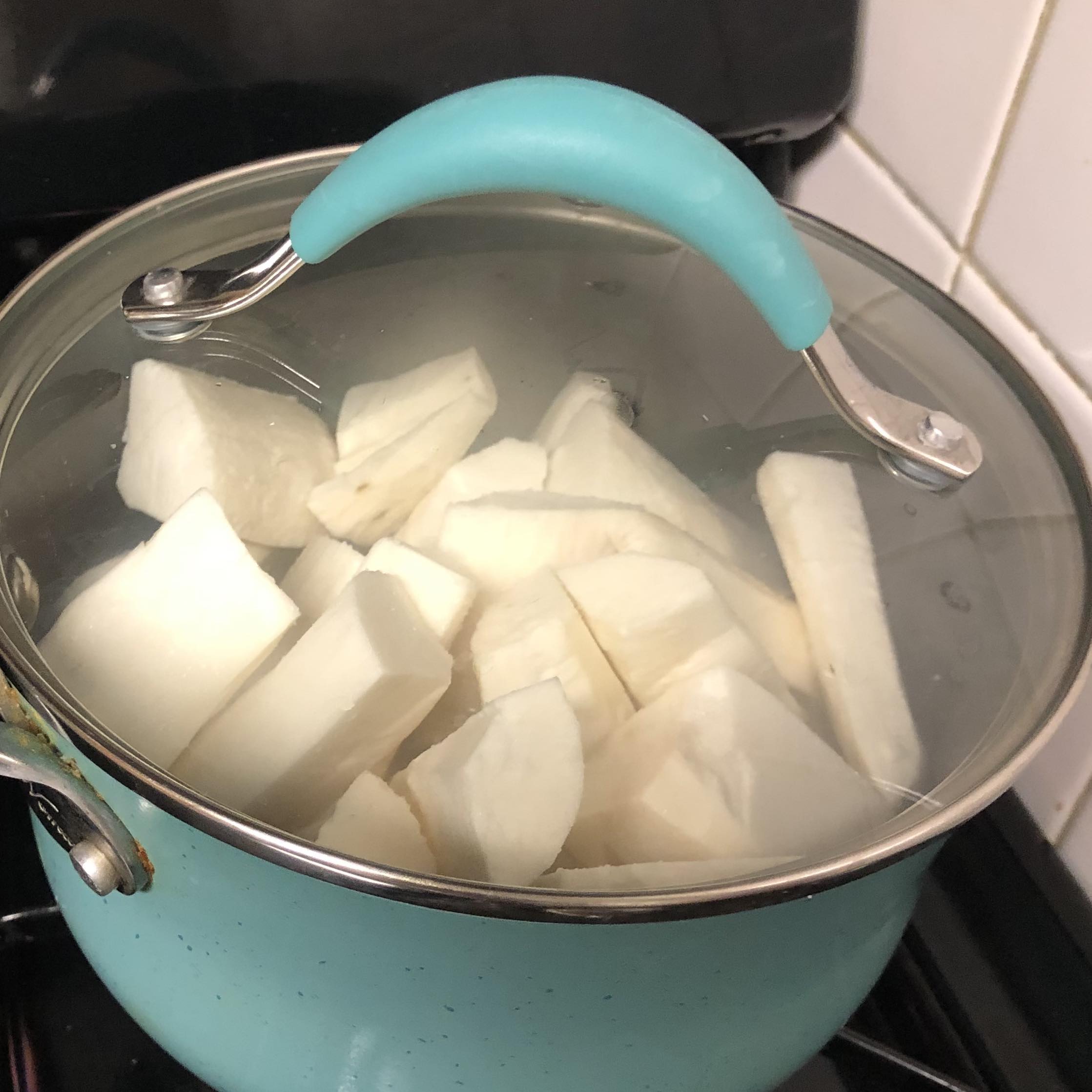
Why are Tubers Popular Across East Africa?
These tubers are a crucial part of East African cuisine for several reasons:
Staple Food: In many East African countries, tubers serve as staple foods and are often used as the base for meals. They can be prepared in numerous ways such as boiling, roasting, frying, or being made into stews or porridge. In this article on East African cuisine: the dishes that define the region, I talk about the process of obtaining flour for ugali (a staple dish in East Africa) from cassava. In the same article, I touch on how sweet potatoes may be boiled with plant proteins such as beans or green grams and pounded to make an affordable and highly nutritious meal. Tubers are basically versatile ingredients in many traditional East African dishes.
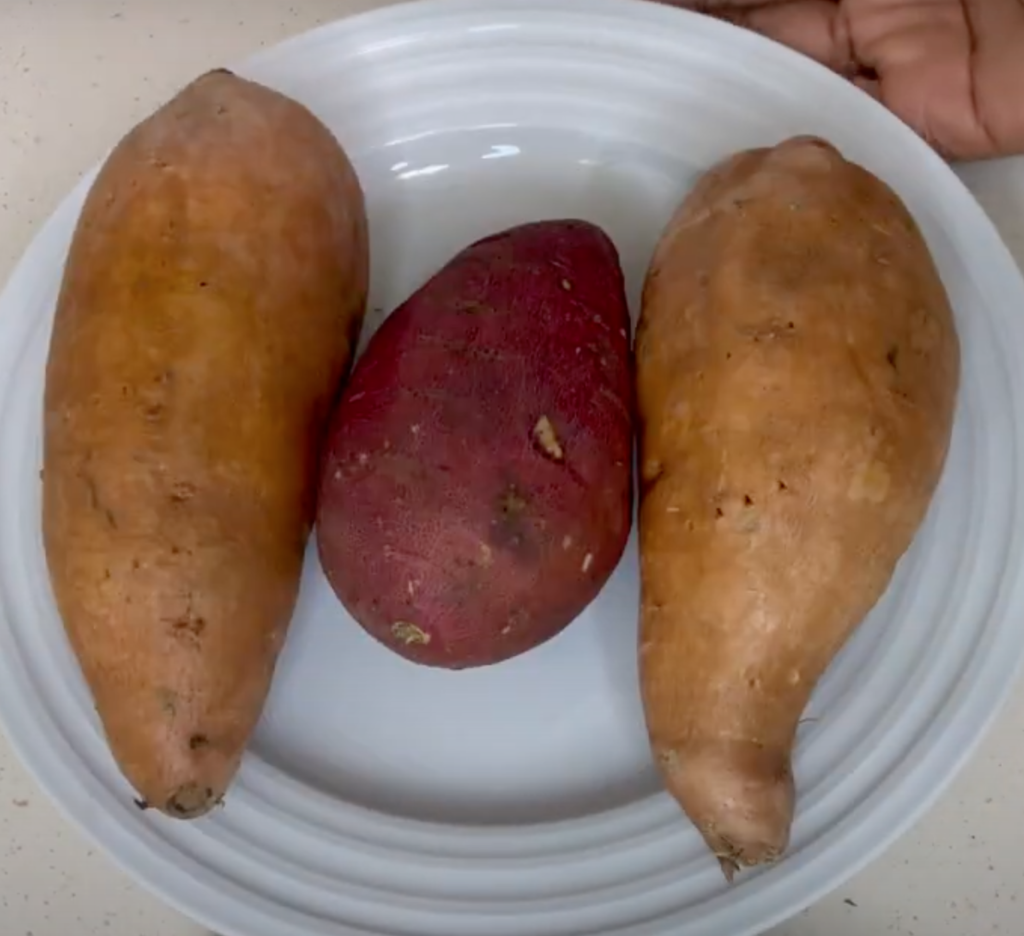
Nutritional Value: As I will discuss in the next section, tubers like cassava, yams, and sweet potatoes are rich in carbohydrates, fiber, and essential vitamins and minerals. Thus, they provide a significant source of energy and help sustain people through their calorie-rich content.
Adaptability: Tubers are well-suited to the diverse climates and soil conditions of East Africa. They are relatively hardy crops that can grow in a variety of environments, making them reliable food sources even in challenging conditions. Cassava and sweet potatoes, for instance, are both known for their drought-resistance properties, and they are some of the dishes that save populations during periods of drought.
Storage and Preservation: Tubers, especially cassava and sweet potatoes, have the advantage of being able to be stored for longer periods compared to some other crops. That is, without requiring equipment such as refrigerators. This quality helps with food security, allowing people to keep a reserve of food throughout the year.
Cultural Significance: Tubers are deeply embedded in the cultural practices and culinary traditions of East Africa. They are featured in many traditional recipes such as the one I mentioned earlier – sweet potatoes boiled with beans or green grams and pounded to make a cheap and nutritious meal – and are often used in ceremonies and special occasions.
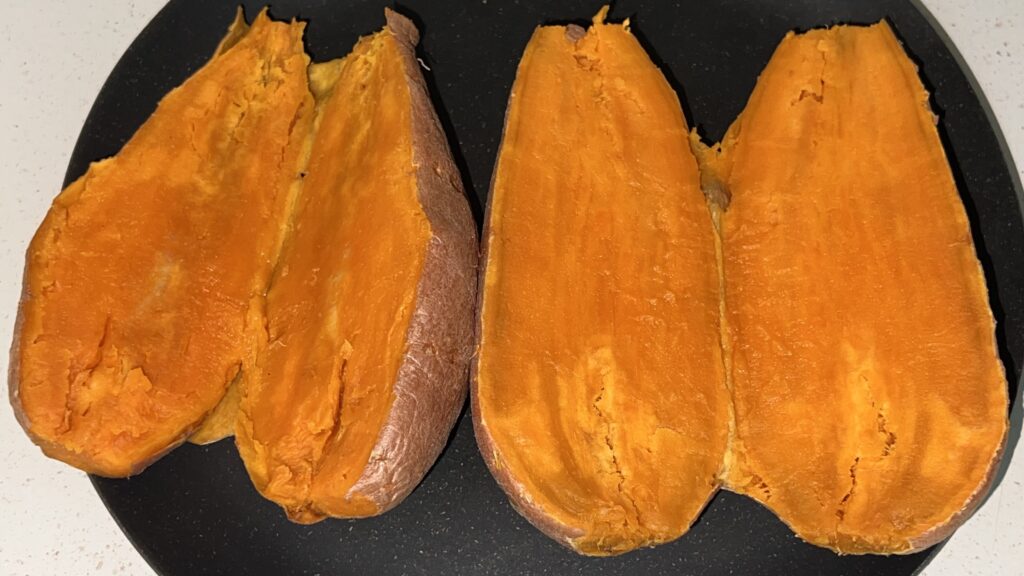
Ten Health and Nutritional Benefits of Eating Tubers
Eating tubers offers a range of nutritional and health benefits according to this article from the National Library of Medicine. Hence, incorporating a variety of tubers into your regular diet can contribute to overall health and well-being, offering a balance of essential nutrients and flavors. Here are ten benefits of eating tubers regularly.
Tubers are rich in Carbohydrates: Tubers are a great source of carbohydrates which provide our bodies with sustained energy and help stabilize blood sugar levels.
Tubers are high in Fiber: Tubers such as sweet potatoes and beets are high in dietary fiber which aids in digestion, helps prevent constipation, and supports overall gut health.
Tubers are Nutrient-Rich: Tubers are packed with essential vitamins and minerals. For example, Irish potatoes are a good source of vitamin C, potassium, and vitamin B6; sweet potatoes, especially the deep-orange-colored ones, are rich in vitamin A (in the form of beta-carotene), vitamin C, and manganese; Beets are rich in folate, manganese, potassium, and iron.
Tubers have Antioxidant Properties: Many tubers contain antioxidant and anti-inflammatory properties, which help protect the body and support overall health.
Tubers support Heart Health: The fiber and minerals such as potassium in tubers contribute to heart health by helping to regulate blood pressure and cholesterol levels in our bodies.
Tubers boost Immune Function: The vitamins and minerals found in tubers, such as vitamin C in regular potatoes and vitamin A in sweet potatoes, play a role in maintaining a healthy immune system.
Tubers Support Metabolism: The B vitamins found in tubers, such as vitamin B6 in potatoes, are essential for energy production and metabolic processes.
Tubers Improve Skin Health: The vitamins and antioxidants in tubers, such as vitamin A and vitamin C, are beneficial for skin health, helping to maintain a healthy complexion and protect one against skin damage.
Tubers are Filling: The combination of fiber and complex carbohydrates in tubers can help you feel full and satisfied, which can aid in weight management by reducing overeating.
Tubers are Versatile and Delicious: Tubers can be prepared in a variety of ways, from baking to boiling, roasting, and frying, making them a versatile ingredient in many dishes. This versatility encourages a diverse and enjoyable diet.
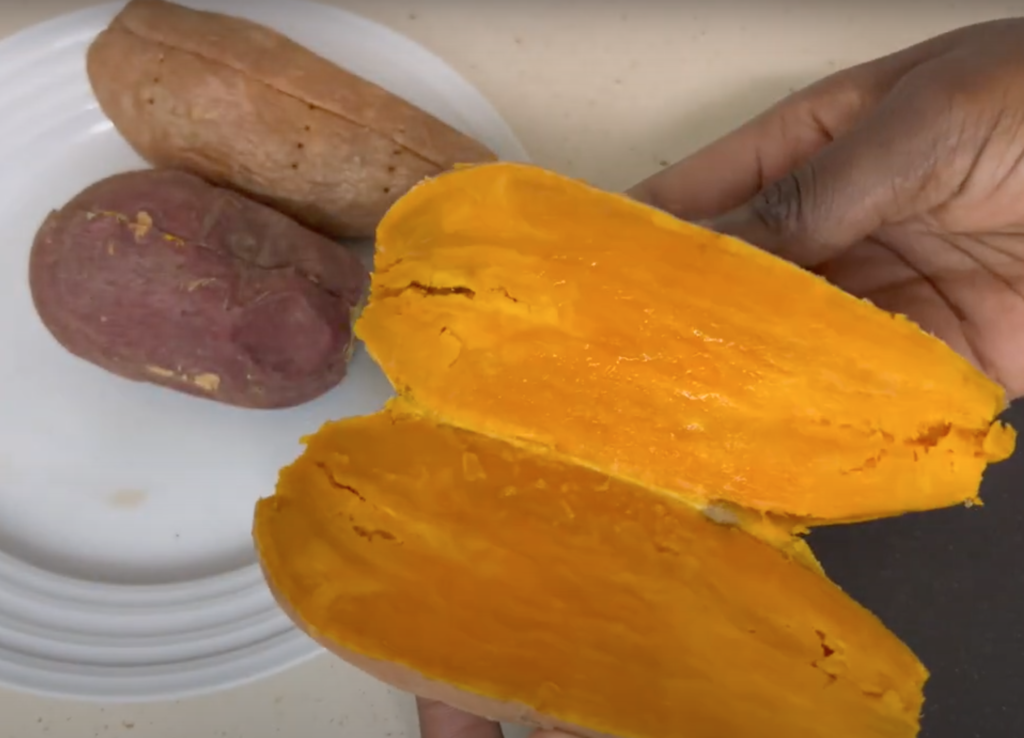
Conclusion
That’s it for my list of the commonly eaten tubers across the world. Overall, the importance of tubers in global cuisine stems from their role in providing nourishment, their accessibility and adaptability to various local conditions, and their central place in the cultural and culinary landscape of different cultures. Each of the tubers reviewed in this article has its own distinct flavor and texture, making it suitable for a wide range of culinary applications.






